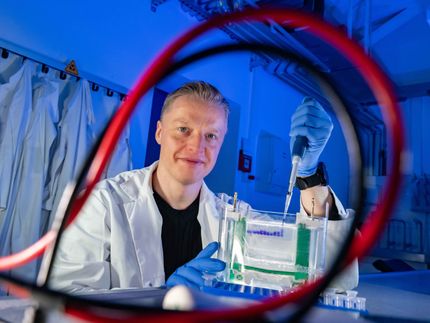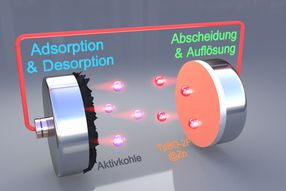RNA Microchips
A new chapter in ribonucleic acid synthesis
Ribonucleic acid (RNA) is, along with DNA and protein, one of the three primary biological macromolecules and was probably the first to arise in early life forms. In the “RNA world” hypothesis, RNA is able to support life on its own because it can both store information and catalyze biochemical reactions. Even in modern life, the most complex molecular machines in all cells, the ribosomes, are made largely of RNA. Chemists at the Faculty of Chemistry of the University of Vienna and at McGill University have developed a new synthetic approach that allows RNA to be chemically synthesized about a million times more efficiently than previously possible.

blickpixel, pixabay.com, CC0
RNA is ubiquitous in cells. It is responsible for shuttling information out of the nucleus, regulating gene expression and synthesizing proteins. Some RNA molecules, particularly in bacteria, also catalyze biochemical reactions and sense environmental signals.
The chemical synthesis of DNA and RNA goes back to the early days of molecular biology, particularly the efforts by Nobel Laureate Har Gobind Khorana in the early 1960s to decipher the genetic code. Over the years, the chemistry has improved considerably but RNA synthesis has remained much more difficult and slow due to the need for an additional protecting group on the 2’-hydroxy of the ribose sugar of RNA. Chemists at Department of Inorganic Chemistry of the Faculty of Chemistry of the University of Vienna and at McGill University have now been able to bring RNA synthesis a large step forward.
Semiconductor technology and synthesis
In order to increase the synthesis efficiency, the chemists joined two key concepts: photolithographic fabrication technology from semiconductor manufacture and the development of a new protecting group.
First, the chemists adapted the photolithographic fabrication technology from the semiconductor chip industry, commonly used for integrated circuit manufacture, for the chemical synthesis of RNA. Biological photolithography makes it possible to produce RNA chips with a density of up to one million sequences per square centimeter. Instead of using far ultraviolet light, which is used in the production of computer chips for silicon etching and doping, the researchers use UV-A light. “Shortwave ultraviolet light has a very destructive effect on RNA, so we are limited to UV-A light in the synthesis” explains Mark Somoza, of the Institute of Inorganic Chemistry.
In addition to the innovative use of photolithography, the researchers were also able to develop a new protecting group for the RNA 2'-hydroxyl group that is compatible with photolithographic synthesis. The new protecting group is acetal levulinyl ester (ALE), which also gives very high yields (over 99 percent) in the coupling reactions between the added RNA monomers in the extension of the RNA strand. "The combination of high-synthesis yield and ease of handling makes it possible to foresee the preparation of longer, and functional, RNA molecules on microchips" said Jory Liétard, post-doc of the group of Mark Somoza.
Original publication
Other news from the department science

Get the life science industry in your inbox
From now on, don't miss a thing: Our newsletter for biotechnology, pharma and life sciences brings you up to date every Tuesday and Thursday. The latest industry news, product highlights and innovations - compact and easy to understand in your inbox. Researched by us so you don't have to.






















































